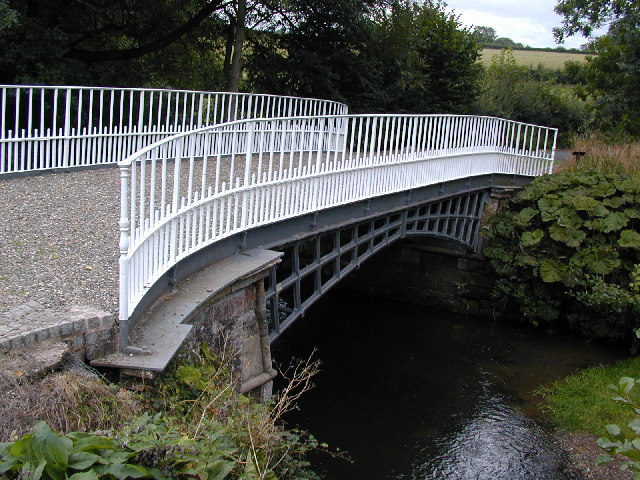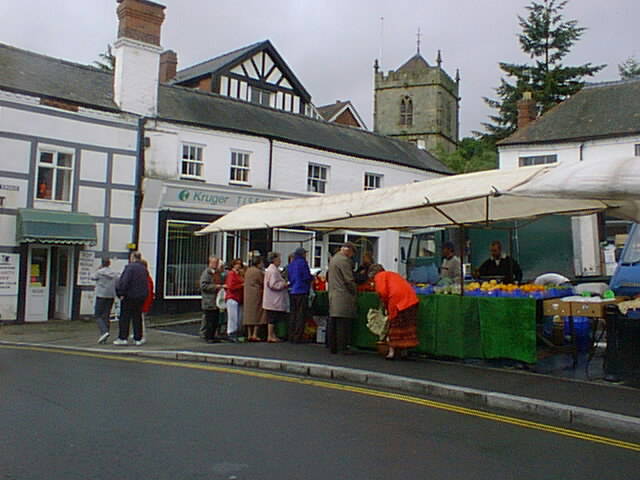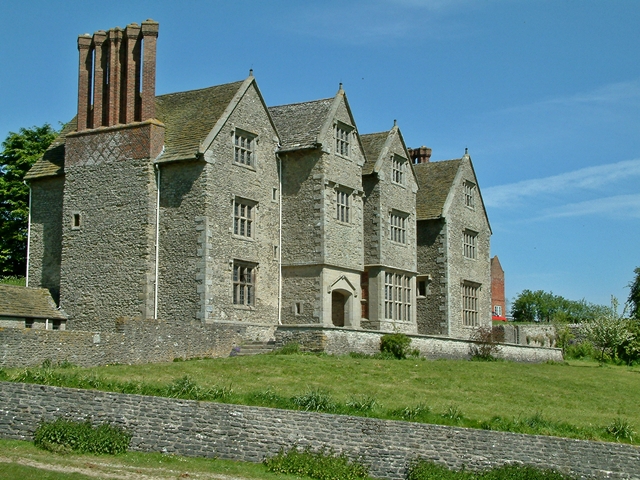|
Quinny Brook
Quinny Brook is a tributary stream of the River Onny which flows through the Shropshire Hills Area of Outstanding Natural Beauty in England. Course Its source is a spring called ''Boiling Well'' on the dissected plateau of the Long Mynd, adjacent to a number of long barrows. From this point it flows south east through the V shaped valley known as Ashes Hollow, to reach the village of Little Stretton. After passing through Little Stretton, the watercourse heads south towards Marshbrook and Strefford. To the north of Strefford, it is joined by its main tributary the Byne Brook. The now larger brook is forded at Strefford from where it flows south-westerly to The Grove and Berrymill cottage, south of Wistanstow, where it joins the River Onny. The brook has a total length of . The drainage basin for the brook, which lies between that of the River Onny to the west, the Cound Brook to the east, and that of the River Corve to the south, has an area of . Byne brook The prin ... [...More Info...] [...Related Items...] OR: [Wikipedia] [Google] [Baidu] |
England
England is a country that is part of the United Kingdom. It shares land borders with Wales to its west and Scotland to its north. The Irish Sea lies northwest and the Celtic Sea to the southwest. It is separated from continental Europe by the North Sea to the east and the English Channel to the south. The country covers five-eighths of the island of Great Britain, which lies in the North Atlantic, and includes over 100 smaller islands, such as the Isles of Scilly and the Isle of Wight. The area now called England was first inhabited by modern humans during the Upper Paleolithic period, but takes its name from the Angles, a Germanic tribe deriving its name from the Anglia peninsula, who settled during the 5th and 6th centuries. England became a unified state in the 10th century and has had a significant cultural and legal impact on the wider world since the Age of Discovery, which began during the 15th century. The English language, the Anglican Church, and Engli ... [...More Info...] [...Related Items...] OR: [Wikipedia] [Google] [Baidu] |
Cound Brook
Cound Brook (pronounced COOnd) is a tributary of the River Severn in Shropshire, England, running to south of the county town Shrewsbury. The Cound Brook rises in the Stretton Hills and discharges into the River Severn at Eyton on Severn after winding its way for across the southern Shropshire-Severn plains. The flow of the Cound Brook can vary from sluggish in a dry summer to a raging torrent in winter or spring. The river is crossed by several bridges along its route including two historic and unusual iron bridges. Several other roads cross the river as fords. The river has breached its banks on the lower flood plain several times in the past and is now monitored by the local rivers authority. The river is named after Cound, the last settlement it passes through prior to the confluence with the River Severn. Conversely one of the villages on its route, Condover, is thought to have been named after the river during the late medieval period. The Coundmoor Brook is a smalle ... [...More Info...] [...Related Items...] OR: [Wikipedia] [Google] [Baidu] |
Church Stretton
Church Stretton is a market town in Shropshire, England, south of Shrewsbury and north of Ludlow. The population in 2011 was 4,671.National Statistics Church Stretton 2011 population area and density The town was nicknamed Little Switzerland in the late Victorian and period for its landscape, and became a health resort. [...More Info...] [...Related Items...] OR: [Wikipedia] [Google] [Baidu] |
Ashes Hollow On The Long Mynd In Shropshire
Ashes may refer to: *Ash, the solid remnants of fires. Media and entertainment Art * ''Ashes'' (Munch), an 1894 painting by Edvard Munch Film * ''The Ashes'' (film), a 1965 Polish film by director Andrzej Wajda * ''Ashes'' (1922 film), an American silent film * ''Ashes'', a 2010 film by director Ajay Naidu * ''Ashes'' (2012 film), a British thriller * ''Ashes'' (1916), American short silent film directed by Robert F. Hill and John McDermott Literature * ''Ashes'' ( pl, Popioły, links=no), a 1904 novel by Polish writer Stefan Żeromski * ''Ashes'' ( it, Cenere, links=no), a 1904 novel by Italian writer Grazia Deledda * ''Ashes'' ( ja, 煤煙, translit=Bō no Kanashimi, links=no), a 2003 novel by Japanese writer Kenzo Kitakata * ''Ashes: Poems New & Old'', a 1979 book by Philip Levine * "Ashes", a 1924 short story by C. M. Eddy, Jr. * ''Ashes'', book 1 of the ASHES trilogy by Ilsa J. Bick * ''Ashes'', a thirty-five volume series of novels by William W. Johnstone ... [...More Info...] [...Related Items...] OR: [Wikipedia] [Google] [Baidu] |
Water Framework Directive
The Water Framework Directive 2000/60/EC is an EU directive which commits European Union member states to achieve good qualitative and quantitative status of all water bodies (including marine waters up to one nautical mile from shore) by 2015. It is a framework in the sense that it prescribes steps to reach the common goal rather than adopting the more traditional limit value approach. The Directive's aim for 'good status' for all water bodies will not be achieved, with 47% of EU water bodies covered by the Directive failing to achieve the aim. Objectives of the Directive The Directive aims for 'good status' for all ground and surface waters (rivers, lakes, transitional waters, and coastal waters) in the EU. The ecological and chemical status of surface waters are assessed according to the following criteria (see also: freshwater environmental quality parameters): * Biological quality (fish, benthic invertebrates, aquatic flora) * Hydromorphological quality such as river b ... [...More Info...] [...Related Items...] OR: [Wikipedia] [Google] [Baidu] |
Eaton-under-Heywood
Eaton-under-Heywood is a civil parish in Shropshire, England. The population of the civil parish at the 2011 census was 171. It is named after the small village of Eaton, which lies under Wenlock Edge and the woods along it. The village is also known as Eaton-under-Heywood (to distinguish it from the other places called Eaton) and the parish/village is sometimes spelt as Eaton-under-Haywood. A path, which is a public right of way, leads straight up the Edge from the village. It is called Jacob's Ladder. There is also a bridleway up the Edge from Eaton. The village of Ticklerton and the hamlets of Birtley, Harton, Hatton, Soudley and Wolverton are in the parish. The nearest town is Church Stretton. The historic parish church here is St Edith's. A little over a mile to the south are the earthwork remains of Middlehope Castle, a motte and bailey which was probably left unfinished. See also * Listed buildings in Eaton-under-Heywood *Simon Brown, Baron Brown of Eaton-under-He ... [...More Info...] [...Related Items...] OR: [Wikipedia] [Google] [Baidu] |
Rushbury
Rushbury is a village and civil parish in Shropshire, roughly five miles from Church Stretton and eight miles from Much Wenlock. Nearby villages include Cardington, Longville in the Dale, Ticklerton and Wall under Haywood. Longville and Wall lie within Rushbury parish. Rushbury is a quiet rural community, with a Church of England church and primary school. History Origins The name Rushbury is thought to derive from Rush Manor, but other evidence suggests that it could originate from the Old English 'risc', literally meaning 'a place where rushes grow', and the Old English word 'burh', meaning a 'fortified place'; putting the two together gives 'Rush Fortification'. Human activity has been present since Neolithic times and there was once an Iron Age hill fort. The area of Rushbury Civil Parish (CP) has changed throughout history. According to the 1831 census it was 5,620 acres, before decreasing to 4,132 acres by the 1851 census and then increasing to 6,304 by 1891, where ... [...More Info...] [...Related Items...] OR: [Wikipedia] [Google] [Baidu] |
Wenlock Edge
Wenlock Edge is a limestone escarpment near Much Wenlock, Shropshire, England and a site of special scientific interest because of its geology. It is over long, running southwest to northeast between Craven Arms and Much Wenlock, and is roughly 1,083 feet above sea level. The deciduous woodland which runs along it covers much of the steep slopes of the escarpment and in parts it is very well preserved. It was featured on the 2005 TV programme ''Seven Natural Wonders'' as one of the wonders of the Midlands. Wenlock Edge contains many interesting features such as Flounders' Folly, Wilderhope Manor and Shipton Hall and waymarked walks such as the Shropshire Way and bridleways such as the Jack Mytton Way. It is a popular area for hillwalking, cycling, mountain biking and horseriding and is also frequented by tourists and sightseers. Robert Hart created a model forest garden from a small orchard on his farm called Highwood Hill in Wenlock Edge. Geology The "world famous ... [...More Info...] [...Related Items...] OR: [Wikipedia] [Google] [Baidu] |
River Corve
The River Corve is a minor river in Shropshire, England. It is a tributary of the River Teme which it joins in the town of Ludlow, and which joins the River Severn at Powick near Worcester. The valley it flows through is known as the Corvedale (or Corve Dale), a term used as a general name for the area, and a name used for example by the primary school in Diddlebury. It is sometimes (archaically) spelled "Corf", which is its pronunciation. Course It flows near Corfton (which it gives its name to), then by Culmington, then through Stanton Lacy and then through the northwest outskirts of Ludlow before joining the Teme in an area of meadows just outside the town. It also gave its name to Corfham Castle, near Peaton. Corfham was the ''caput'' (the centre of medieval administration) for two Saxon hundreds that encompassed the Corve Dale — Patton and Culvestan. They were merged into a single hundred (Munslow) in the reign of Henry I, however Culvestan continued to be a name used to ... [...More Info...] [...Related Items...] OR: [Wikipedia] [Google] [Baidu] |
Drainage Basin
A drainage basin is an area of land where all flowing surface water converges to a single point, such as a river mouth, or flows into another body of water, such as a lake or ocean. A basin is separated from adjacent basins by a perimeter, the '' drainage divide'', made up of a succession of elevated features, such as ridges and hills. A basin may consist of smaller basins that merge at river confluences, forming a hierarchical pattern. Other terms for a drainage basin are catchment area, catchment basin, drainage area, river basin, water basin, and impluvium. In North America, they are commonly called a watershed, though in other English-speaking places, "watershed" is used only in its original sense, that of a drainage divide. In a closed drainage basin, or endorheic basin, the water converges to a single point inside the basin, known as a sink, which may be a permanent lake, a dry lake, or a point where surface water is lost underground. Drainage basins are similar ... [...More Info...] [...Related Items...] OR: [Wikipedia] [Google] [Baidu] |
Shropshire
Shropshire (; alternatively Salop; abbreviated in print only as Shrops; demonym Salopian ) is a landlocked historic county in the West Midlands region of England. It is bordered by Wales to the west and the English counties of Cheshire to the north, Staffordshire to the east, Worcestershire to the southeast, and Herefordshire to the south. A unitary authority of the same name was created in 2009, taking over from the previous county council and five district councils, now governed by Shropshire Council. The borough of Telford and Wrekin has been a separate unitary authority since 1998, but remains part of the ceremonial county. The county's population and economy is centred on five towns: the county town of Shrewsbury, which is culturally and historically important and close to the centre of the county; Telford, which was founded as a new town in the east which was constructed around a number of older towns, most notably Wellington, Dawley and Madeley, which is today th ... [...More Info...] [...Related Items...] OR: [Wikipedia] [Google] [Baidu] |
Strefford
Strefford is a historic hamlet (place), hamlet in Shropshire, England. It lies in the civil parishes in England, civil parish of Wistanstow and is situated just off the A49 road north of the small town of Craven Arms. The nearest settlement is Upper Affcot, to the north on the A49, a hamlet which has a public house. Strefford is at an elevation of between and 135m, and just to the east is Strefford Wood which is at the southern end of Wenlock Edge; the bridleway that runs along the Edge ends just outside the hamlet.Ordnance Survey mapping Strefford was recorded in the Domesday Book as 'Straford' and in 1255 as 'Streford'.Poulton-Smith (2009) ''Shropshire Place Names'' p 136 The name derives from its situation between the Roman road (a "Street") at Wistanstow (to the west) and the ford (crossing), ford immediately to the east of the hamlet, which crosses the Byne or Quinny Brook. The Byne and Quinny Brooks meet just prior to the ford and only a mile after flow into the River Onn ... [...More Info...] [...Related Items...] OR: [Wikipedia] [Google] [Baidu] |




